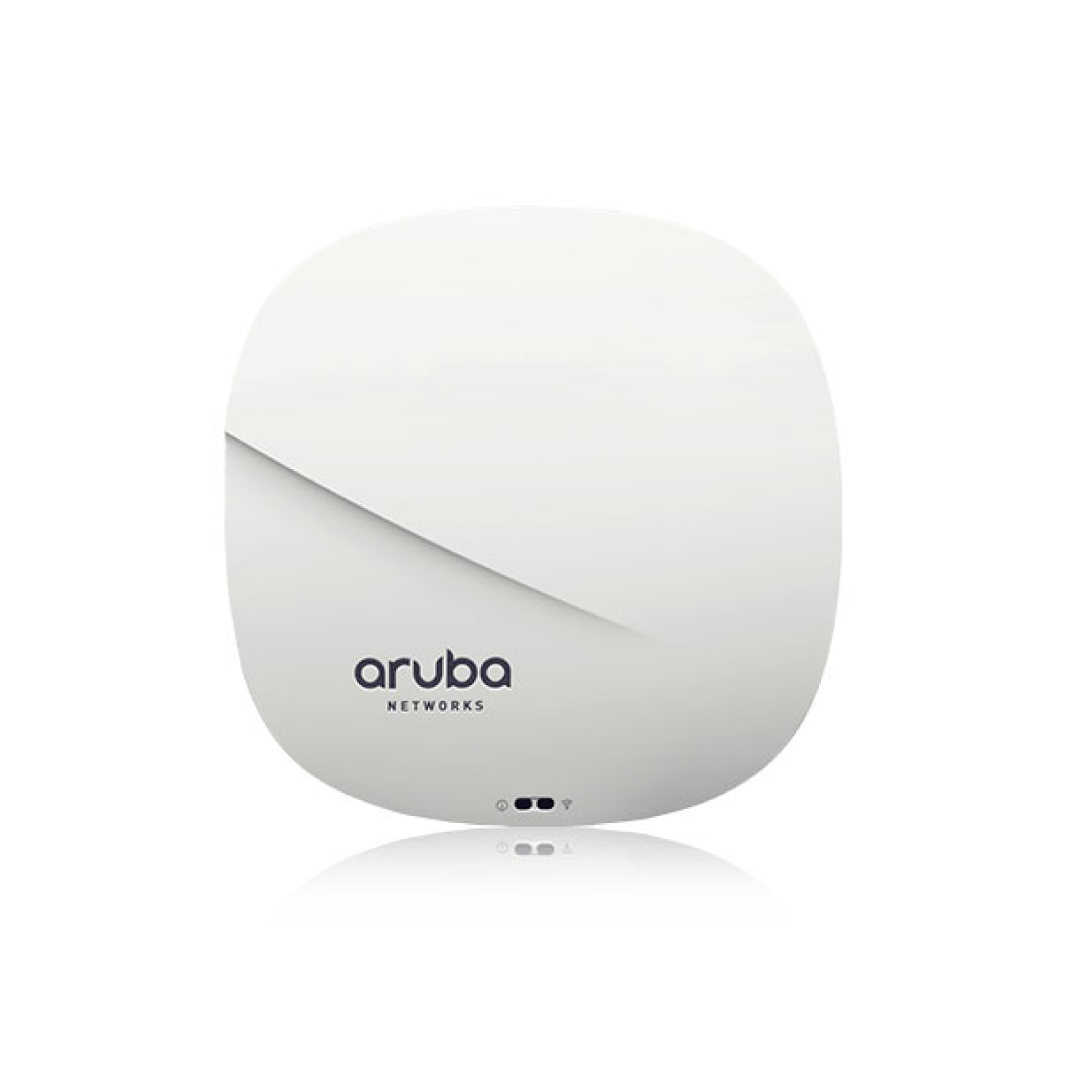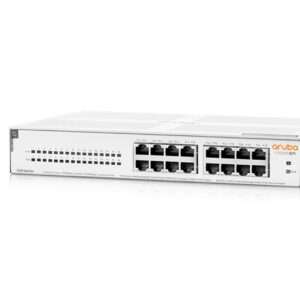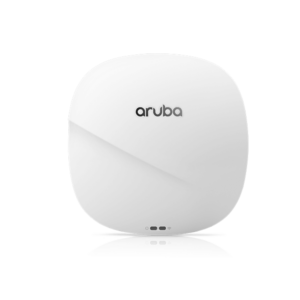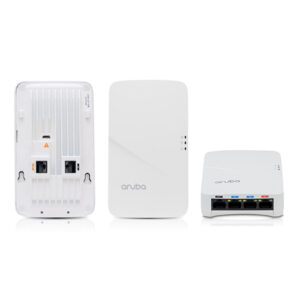Level up your business with Stack Link
Aruba 330 Series
Features
- Dual-Band Wi-Fi Connectivity
- 802.11ac Wave 2 Technology
- 4×4:4 Multi-User MIMO (MU-MIMO)
- Integrated BLE for IoT Support
- Advanced WPA3 Security Encryption
- Role-Based Access Control and Application Visibility
General Specifications
- Model: Aruba 330 Series Access Point
- Form Factor: Ceiling or wall-mountable
- Deployment Options: Indoor environments
- Power Input: 48V DC (via PoE) or 12V DC (external power supply)
- Power Consumption: Maximum 25.9W
- Operating Temperature: 0°C to 50°C (32°F to 122°F)
Aruba 330 Series
Features
- Dual-Band Wi-Fi Connectivity
- 802.11ac Wave 2 Technology
- 4×4:4 Multi-User MIMO (MU-MIMO)
- Integrated BLE for IoT Support
- Advanced WPA3 Security Encryption
- Role-Based Access Control and Application Visibility
General Specifications
- Model: Aruba 330 Series Access Point
- Form Factor: Ceiling or wall-mountable
- Deployment Options: Indoor environments
- Power Input: 48V DC (via PoE) or 12V DC (external power supply)
- Power Consumption: Maximum 25.9W
- Operating Temperature: 0°C to 50°C (32°F to 122°F)
Product Details
The Aruba 330 Series Access Point is designed for ultra-high-density environments, delivering unparalleled Wi-Fi performance and reliability. Leveraging 802.11ac Wave 2 technology with Multi-User MIMO (MU-MIMO) and Aruba’s ClientMatch capabilities, the 330 Series ensures optimal performance in high-demand settings like large offices, stadiums, and auditoriums. Its integrated Bluetooth Low Energy (BLE) supports IoT connectivity, while robust security features safeguard network data. The 330 Series is scalable, energy-efficient, and easily managed through Aruba Central or on-premises controllers, offering a superior wireless networking solution.
Specifications Table
| Category | Specification |
|---|---|
| Model | Aruba 330 Series Access Point |
| Form Factor | Ceiling or wall-mountable |
| Deployment Options | Indoor environments |
| Wireless Standards | IEEE 802.11a/b/g/n/ac Wave 2 |
| Frequency Bands | Dual-band 2.4 GHz and 5 GHz |
| Maximum Throughput | Up to 2.6 Gbps (1.733 Gbps on 5 GHz and 800 Mbps on 2.4 GHz) |
| MIMO Technology | 4×4:4 MU-MIMO |
| Channel Bandwidth | 20, 40, 80 MHz |
| Transmit Power | Configurable for optimal performance |
| Antenna | Integrated omnidirectional antennas |
| Ethernet Ports | 2 x Gigabit Ethernet ports (10/100/1000 Mbps) |
| PoE Support | IEEE 802.3af/at for power and data over a single cable |
| Authentication | WPA2/WPA3, 802.1X, and MAC-based authentication |
| Encryption | Advanced Encryption Standard (AES) |
| Access Control | Role-based access control |
| Firewall | Integrated Layer 4-7 firewall |
| Management Options | Aruba Central (Cloud-based), On-premises via Mobility Controller |
| Monitoring | Real-time performance and usage tracking |
| IoT Support | Built-in BLE (Bluetooth Low Energy) |
| Guest Wi-Fi | Supports secure onboarding for guests |
| Quality of Service | Prioritizes voice, video, and critical applications |
| Operating Temperature | 0°C to 50°C (32°F to 122°F) |
| Operating Humidity | 5% to 95% non-condensing |
| Dimensions | 220 mm x 220 mm x 48 mm (8.66 in x 8.66 in x 1.89 in) |
| Weight | 1.0 kg (2.2 lbs) |
| Mounting Options | Ceiling and wall-mount brackets included |
| Certifications | FCC, CE, IC, UL, RoHS |
| Safety Standards | Meets global safety and regulatory compliance |
| Power Input | 48V DC (via PoE) or 12V DC (external power supply) |
| Power Consumption | Maximum 25.9W |






